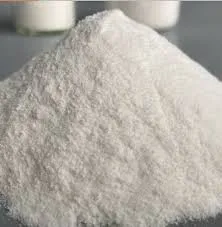
Dec . 14, 2024 07:09 Back to list
Exploring Hydroxypropyl Methyl Cellulose Applications and Benefits in Various Industries
Understanding Hydroxypropyl Methylcellulose (HPMC) Properties, Uses, and Applications
Hydroxypropyl methylcellulose (HPMC) is a widely used cellulose ether derived from natural cellulose, which is a key component of plant cell walls. With the CAS number 9004-65-3, HPMC has garnered significant attention in various industries, including pharmaceuticals, food, cosmetics, and construction, due to its unique properties and versatility.
Properties of Hydroxypropyl Methylcellulose
HPMC is a white to off-white powder that is odorless and tasteless. It is soluble in cold water, forming a transparent, viscous solution. One of the most notable characteristics of HPMC is its ability to form gels when heated, which is a beneficial feature in many applications. This gelling ability is typically utilized in food products to create desirable textures and in pharmaceuticals for controlled release formulations.
The viscosity of HPMC solutions can vary widely, depending on the concentration and the degree of methoxy and hydroxypropyl substitution. Manufacturers can tailor these properties to meet the specific needs of different applications. HPMC is non-ionic, which means it is stable across a wide pH range and is not affected by ionic compounds, making it highly versatile in formulations.
Applications of Hydroxypropyl Methylcellulose
In the pharmaceutical sector, HPMC acts as an excipient in drug formulations. Its ability to control the release of active ingredients makes it an essential component in tablet coatings and controlled-release formulations. HPMC can improve the stability and bioavailability of drugs while enhancing their solubility. It is also widely used in ocular preparations, as its viscoelastic properties provide lubrication and comfort to the eyes.
2. Food Industry
hydroxypropyl methyl cellulose cas no

HPMC is utilized extensively in the food industry as a thickening, gelling, and emulsifying agent. It is commonly found in ice creams, sauces, and dressings, providing a smooth texture and preventing ingredient separation. Additionally, HPMC is utilized in gluten-free baked goods, helping to improve their texture and moisture retention. Its functional properties contribute to extending shelf life and enhancing overall product quality, catering to the growing demand for healthier, gluten-free products.
3. Cosmetics and Personal Care
In the cosmetics industry, HPMC serves as a thickener and stabilizing agent in creams, lotions, and gels. It helps to enhance the texture and spreadability of products while providing a pleasant sensory experience. HPMC also functions as a film-forming agent, creating a protective barrier on the skin and helping to retain moisture, which is especially valued in moisturizing formulations.
4. Construction Sector
Hydroxypropyl methylcellulose is used in the construction industry as an additive in cement and mortar formulations. It improves the workability, water retention, and adhesion of construction materials. HPMC's ability to modify the rheological properties of these mixtures results in better application and finish, leading to enhanced durability and performance of building materials.
Safety and Environmental Considerations
HPMC is generally considered safe for consumption and application in cosmetic products. It has been evaluated by various regulatory agencies and is classified as a non-toxic substance. Its natural origin makes it an appealing choice for consumers looking for eco-friendly products. However, it's essential to use HPMC within recommended guidelines to avoid potential issues associated with excessive consumption or application.
Conclusion
Hydroxypropyl methylcellulose (HPMC) is a remarkable compound with a broad range of applications across various industries. Its unique properties, including its versatility as a thickening and binding agent, make it a valuable ingredient in pharmaceuticals, food products, cosmetics, and construction materials. As industries continue to evolve and seek natural and efficient solutions, HPMC's role is likely to expand, reinforcing its importance in both everyday products and specialized applications. With its safety profile and functional benefits, HPMC represents a significant breakthrough in material science, contributing to improved formulations and enhanced user experiences in numerous domains.
-
Versatile Hpmc Uses in Different Industries
NewsJun.19,2025
-
Redispersible Powder's Role in Enhancing Durability of Construction Products
NewsJun.19,2025
-
Hydroxyethyl Cellulose Applications Driving Green Industrial Processes
NewsJun.19,2025
-
Exploring Different Redispersible Polymer Powder
NewsJun.19,2025
-
Choosing the Right Mortar Bonding Agent
NewsJun.19,2025
-
Applications and Significance of China Hpmc in Modern Industries
NewsJun.19,2025







